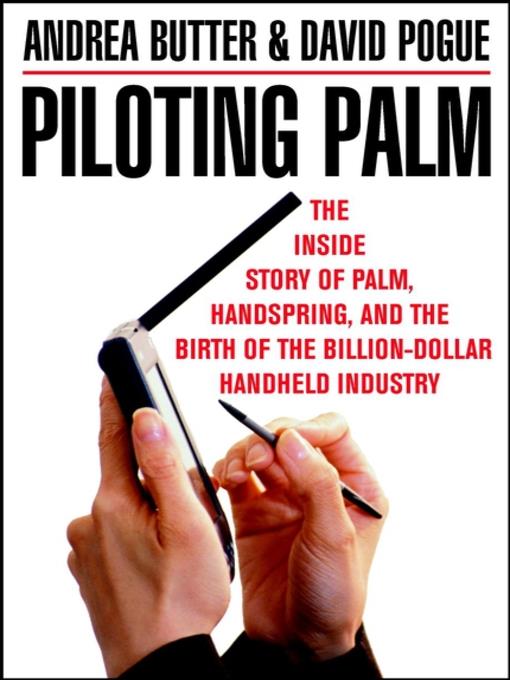
Piloting Palm
The Inside Story of Palm, Handspring, and the Birth of the Billion-Dollar Handheld Industry
کتاب های مرتبط
- اطلاعات
- نقد و بررسی
- دیدگاه کاربران
نقد و بررسی

February 11, 2002
The swift Internet-like alterations in Palm's corporate structure make the company an excellent case study of the late 1990s technology-driven boom and bust. True, Palm was not precisely a dot-com stock, but who can argue that the consumer impulse to drop $500 on a spruced-up date book was anything but high-tech froth? Palm was founded in 1992 with hard-won seed money, just a few years before venture capital rolled across Silicon Valley like a tsunami. It began as the junior partner in an unsuccessful consortium effort to compete with Apple Computer's Newton, the breakthrough handheld device. This failed strategy inspired the software executives to build their own hardware without relying on strategic partnerships, until financing troubles forced them to sell out to a larger firm, modem-maker U.S. Robotics. When USR was acquired by 3Com, Palm became the junior partner in a megamerger. Eventually, Palm was spun out in an IPO during the heady days of early 2000, and employees drooled as the stock price spiked to $165 on the first day of trading. (Today Palm shares trade between $2 and $4.) The authors give detailed portraits of both high-tech product launches and investment banking negotiations without once getting bogged down in the jargon of either world. No doubt readers can thank coauthor Pogue, a New York Times
columnist, for the smooth, lucid prose. Former Palm marketing v-p Butter is an unabashed fan of the company's founders—technologist Jeff Hawkins, CEO Donna Dubinsky and marketing director Ed Colligan—and she makes a compelling case that these three launched the handheld computer industry. (Mar.)Forecast:This title will easily fit into the B-school curriculum on corporate finance or marketing, since it offers insights into both. Hardcore techies should enjoy it, too, because it's filled with colorful portrayals of leading industry figures.

March 15, 2002
Since Americans love gadgets, they should be interested in this book, which chronicles how Jeff Hawkins had an inspiration that led to the handheld industry, the greatest gadget creator of them all. Former Palm Computing executive Butter and New York Times technology consultant Pogue recount how Hawkins and a few others started Palm Computing, surviving crisis after crisis until it was eventually sold to another company and ultimately spun off in an IPO but not before Hawkins and several of his followers had left to start another handheld company called Handspring. Along the way, we learn that Silicon Valley start-ups are at the mercy of venture capitalists, that the launching of new products is fraught with peril, and that small-tech companies can occasionally compete successfully with larger companies (e.g., Microsoft). But, more tellingly, the authors calculate the human cost of sacrificing one's life in order to realize a dream. There's plenty of drama here, and, given the expertise of the authors, one would have expected a gripping read rather than simply a connecting of the dots. Not so, unfortunately; the book suffers from workmanlike writing. Handheld organizers are here to stay, but their real story remains to be told. For larger business collections only. Richard Drezen, Washington Post News Research, New York
Copyright 2002 Library Journal, LLC Used with permission.

























دیدگاه کاربران